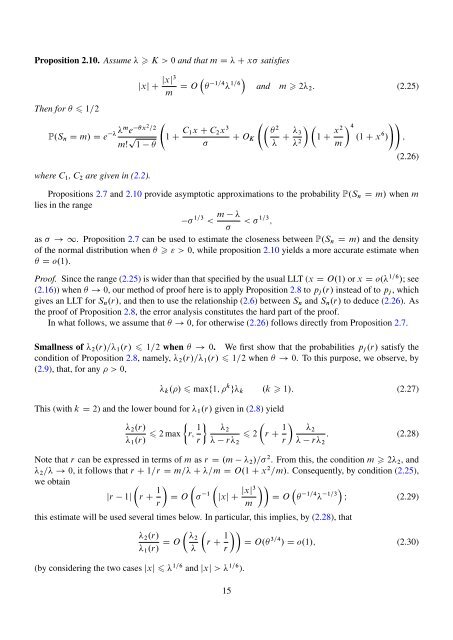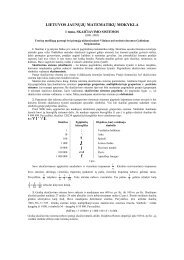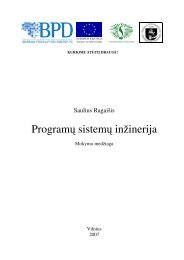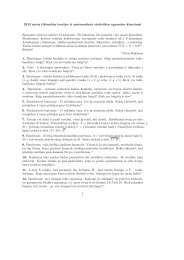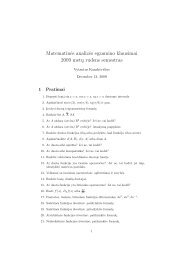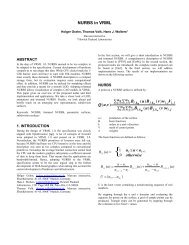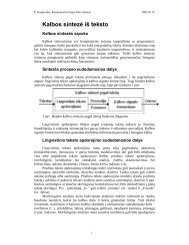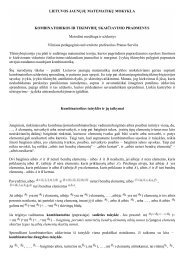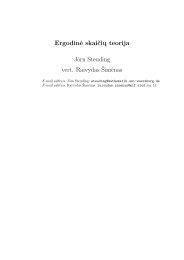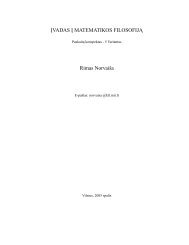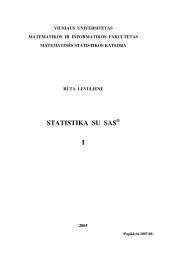Preprint
Preprint
Preprint
Create successful ePaper yourself
Turn your PDF publications into a flip-book with our unique Google optimized e-Paper software.
Proposition 2.10. Assume K > 0 and that m D C x satisfiesThen for 1=2P.S n D m/ D e m e x2 =2m! p 1 where C 1 , C 2 are given in (2.2).jxj C jxj3mD O 1=4 1=6 1 C C 1x C C 2 x 3and m 2 2 : (2.25) 2C O K C 431 C x2.1 C x /!!6 ; 2 m(2.26)Propositions 2.7 and 2.10 provide asymptotic approximations to the probability P.S n D m/ when mlies in the range 1=3 < m < 1=3 ;as ! 1. Proposition 2.7 can be used to estimate the closeness between P.S n D m/ and the densityof the normal distribution when " > 0, while proposition 2.10 yields a more accurate estimate when D o.1/.Proof. Since the range (2.25) is wider than that specified by the usual LLT (x D O.1/ or x D o. 1=6 /; see(2.16)) when ! 0, our method of proof here is to apply Proposition 2.8 to p j .r/ instead of to p j , whichgives an LLT for S n .r/, and then to use the relationship (2.6) between S n and S n .r/ to deduce (2.26). Asthe proof of Proposition 2.8, the error analysis constitutes the hard part of the proof.In what follows, we assume that ! 0, for otherwise (2.26) follows directly from Proposition 2.7.Smallness of 2 .r/= 1 .r/ 1=2 when ! 0. We first show that the probabilities p j .r/ satisfy thecondition of Proposition 2.8, namely, 2 .r/= 1 .r/ 1=2 when ! 0. To this purpose, we observe, by(2.9), that, for any > 0, k ./ maxf1; k g k .k 1/: (2.27)This (with k D 2) and the lower bound for 1 .r/ given in (2.8) yield 2 .r/r; 1 .r/ 2 max 1 2 2 r C 1 r r 2 r 2:r 2(2.28)Note that r can be expressed in terms of m as r D .m 2 /= 2 . From this, the condition m 2 2 , and 2 = ! 0, it follows that r C 1=r D m= C =m D O.1 C x 2 =m/. Consequently, by condition (2.25),we obtainjr 1j r C 1 D Ojxj 1 C jxj3 D O 1=4 1=3 I (2.29)rmthis estimate will be used several times below. In particular, this implies, by (2.28), that 2 .r/ 1 .r/ D O 2r C 1 D O. 3=4 / D o.1/; (2.30) r(by considering the two cases jxj 1=6 and jxj > 1=6 ).15


